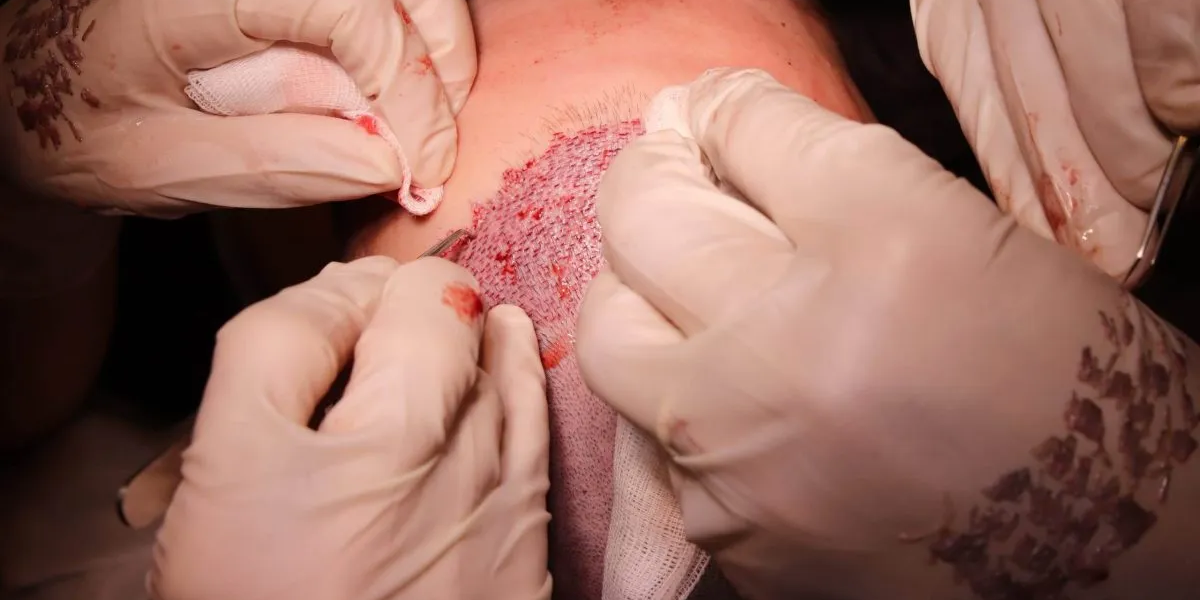A hair transplant is a life-changing procedure that helps restore confidence and natural hair growth. However, proper scalp care after a hair transplant is crucial for achieving the best results. The post-operative phase plays a significant role in determining how well the newly Hair Transplant (زراعة الشعر ) hair follicles settle and grow. In this article, we’ll explore the importance of scalp care, potential risks, benefits, and frequently asked questions surrounding this treatment to ensure a smooth and successful recovery journey.
Why Scalp Care Matters After a Hair Transplant?
The scalp becomes sensitive and vulnerable after a hair transplant, making it essential to follow proper aftercare. Proper scalp care helps in reducing inflammation, preventing infection, and ensuring that the transplanted follicles anchor securely. Neglecting post-transplant care can lead to poor graft survival and even irreversible damage. Following a dedicated routine of gentle cleansing, avoiding sun exposure, and refraining from scratching or picking at the scalp can make a significant difference in healing and hair regrowth.
During the initial days post-procedure, the scalp may experience redness, mild swelling, and scabbing. These are natural responses and part of the healing process. However, how you manage this stage plays a huge role in the overall outcome. Always follow the timeline for washing your hair, avoid intense workouts, and wear a hat if you must go outside to shield your scalp from dust and UV rays.
The Importance of Post-Transplant Maintenance:
Taking care of your scalp is not just about healing—it’s about optimizing the results of your investment. After a hair transplant, your body works to nourish and accept the newly implanted follicles. If the scalp becomes irritated, infected, or inflamed, it may reject the grafts or delay hair regrowth.
Some key habits to adopt during recovery include using a mild shampoo (as advised), avoiding direct water pressure on the scalp, sleeping with your head elevated for a few days, and ensuring proper hydration. Keeping your scalp clean without over-scrubbing is essential. You should also avoid alcohol and smoking during the healing phase, as these can slow circulation and impair graft survival.
Understanding the Risks of Improper Scalp Care:
While hair transplants are generally safe, poor scalp care can increase the risk of complications. Failing to follow post-care instructions can lead to issues like folliculitis (inflammation of hair follicles), infection, and shock loss (temporary shedding of native or transplanted hair). Additionally, scratching the scalp or wearing tight headwear too soon can dislodge grafts, affecting your final hair density.
It’s also important to be aware of signs of trouble, such as excessive pain, unusual swelling, or pus-filled lesions. If you notice any of these symptoms, prompt action is necessary. Keep the scalp free from heavy products and avoid touching it unnecessarily to reduce the chance of contamination or irritation.
Benefits of Proper Scalp Aftercare:
When you prioritize scalp care after a Hair Transplant Treatment(علاج زراعة الشعر), you’re setting the stage for excellent long-term results. Transplanted follicles begin to grow in their new locations and start producing hair naturally over the coming months. With proper care, the new hair will grow healthier, thicker, and stronger.
The psychological benefits are equally significant. As your hairline improves and bald patches fill in, you’ll likely feel more confident in your appearance. Proper care not only maximizes hair growth but also ensures the longevity of your results. Remember, a hair transplant is a partnership between you and your body—nurture it accordingly.
Common FAQs About Hair Transplant Aftercare:
When can I wash my hair after a hair transplant?
Usually, gentle hair washing begins 48 to 72 hours after the procedure, following the specific technique recommended.
Is it normal to have scabs on my scalp?
Yes, small scabs will form where grafts were placed. They typically fall off within 7 to 10 days.
Can I exercise after the procedure?
Strenuous physical activity should be avoided for at least a week to prevent excessive sweating and pressure on the scalp.
How long does it take for hair to start growing?
New growth generally starts around the 3rd to 4th month post-transplant, with more visible results after 6 to 12 months.
Will the transplanted hair fall out?
Initial shedding, called shock loss, is common within the first few weeks. This is temporary and part of the hair growth cycle.
Conclusion:
Caring for your scalp after a hair transplant is an essential step in the overall success of the treatment. It ensures that the grafts settle properly and that your new hair grows in healthy and strong. By understanding the importance of proper aftercare, being aware of potential risks, and embracing the long-term benefits, you can enjoy a fuller head of hair and improved confidence. Treat your scalp with patience and care, and your results will speak for themselve












